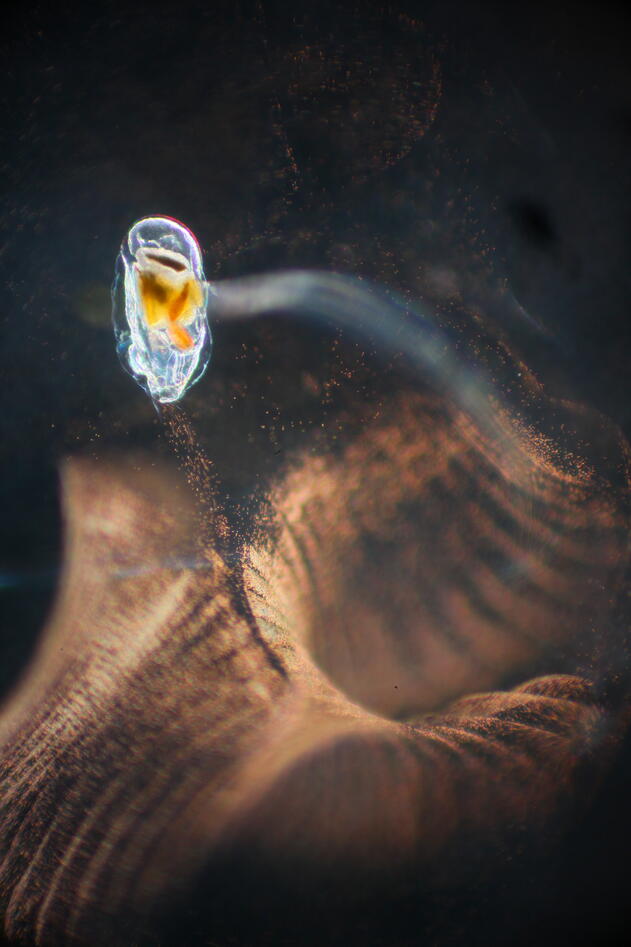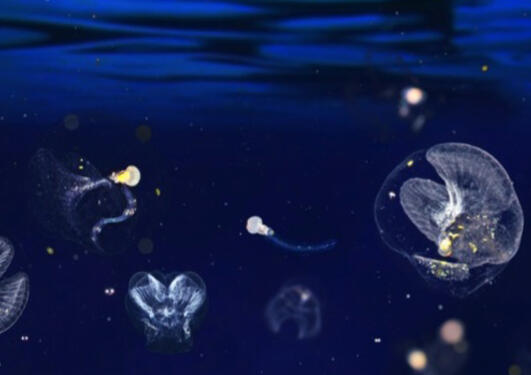Traveling from Oregon to Bergen to study Oikopleura in culture
The Appendicularian Facility at the Michael Sars Centre at the University of Bergen is one of only four in the world. This month, guest researchers traveled from the U.S. to conduct experiments in this unique laboratory.
Main content
Research Assistant Professor Dr. Anne Thompson and Graduate Research Assistant Carey Sweeney from Portland State University partnered with collaborator Dr. Terra Hiebert, Research Associate in the Sutherland group at the University of Oregon, to conduct a series of experiments at the Michael Sars Centre, University of Bergen studying the appendicularian Oikopleura dioica. The facility in Bergen is one of only four in the world, with the other three facilities located in Barcelona, Spain, and in Osaka and Okinawa in Japan.
The state-of-the-art Appendicularian facility, led by Head Engineer Anne Aasjord, was established at the Michael Sars Centre in 1998 by Prof. Daniel Chourrout and former Michael Sars Centre group leader Prof. Eric Thompson. Since then, it has had a crucial role in expanding the appendicularian research community. “Most researchers doing significant work on Oikopleura have been visiting us to learn how to culture the animal”, Prof. Chourrout said. “Beyond the culture, our groups have been establishing several key methods used for molecular biology studies of Oikopleura”, he added.
Oikopleura dioica is a microscopic, transparent planktonic species found in abundance all over the globe. It plays a crucial role in marine ecosystems, contributing to carbon transfers within the water column and ingesting large amounts of particles and microorganisms. “We are enamored with the animals - they look like tiny specks by the naked eye but put them under the microscope and you witness a majestic creature with a very sophisticated feeding machinery”, Dr. Anne Thompson said.
“The Bergen appendicularian facility is one of the very few, maybe even the only, facility in the world where appendicularians are expertly maintained and cultured in a very reliable and accessible way”
- Dr. Anne Thompson
Thompson's research group, supported by the US National Science Foundation and the Simons Foundation, is interested in finding out how the ubiquitous appendicularian interacts with bacteria in the ocean. The stable culture conditions in the Appendicularian Facility allow for fine-tuned experiments that will help the team understand the impact of these trophic interactions on marine ecosystems. “I could not do this specific project without this facility”, explained Carey Sweeney. “I think that the data that I would produce would look very different, and it wouldn’t be the quantitative data that I'll get from here.”
In the Sutherland lab, the focus is on the biology and fluid dynamics of gelatinous marine organisms. “As we work with appendicularians, this facility is often in our minds when we are exploring research projects”, said Dr. Terra Hiebert. “Since Anne [Thompson] visited last year, I have been designing specific experiments using artificial microspheres as food particles that could be carried out there”. The team had ambitious plans for their two-week stay at the Centre and intended to make the most of the resources offered by the facility. “The number of animals available and at the same developmental stage at the Appendicularian facility in Bergen provides the most efficient way to carry out our research experiments”, Dr. Hiebert explained. “The work we accomplished in one week would have taken months in Oregon!”
The Appendicularian Facility offers unparalleled opportunities to study the fascinating planktonic animals. The three guest researchers were very satisfied with the work they completed during their stay at the Centre and hope to come back for future experiments. “The Bergen appendicularian facility is one of the very few, maybe even the only, facility in the world where appendicularians are expertly maintained and cultured in a very reliable and accessible way”, Dr. Thompson said. “We are so grateful to Daniel Chourrout and Anne Aasjord for such an incredible resource.”










